 W
WAston House was a prominent 17th century residence with large parkland situated opposite the parish church in Aston, Hertfordshire, UK.The house was demolished in 1961 by the Stevenage New Town Development Corporation after occupying it as its initial HQ. The site was developed and named Yeomans Drive in memory of Arthur Yeomans the last owner in 1939 when it was requisitioned by the War Office. The adjoining parkland became Stevenage Golf-and Conference-Centre in April 1980.
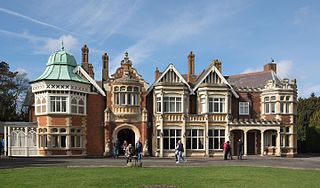 W
WBletchley Park is an English country house and estate in Bletchley, Milton Keynes (Buckinghamshire) that became the principal centre of Allied code-breaking during the Second World War. The mansion was constructed during the years following 1883 for the financier and politician Sir Herbert Leon in the Victorian Gothic, Tudor, and Dutch Baroque styles, on the site of older buildings of the same name.
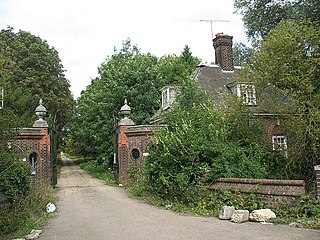 W
WBriggens House is a Grade II listed 18th-century house and parklands near the village of Roydon, Essex, England. It has a number of features from the garden designer Charles Bridgeman from 1720. There are also some remains of the pleasure gardens developed by Lord Hunsden in 1908.
 W
WSt Mary le Port is a ruined parish church in the centre of Bristol, England, situated in Castle Park on what remains of Mary le Port Street.
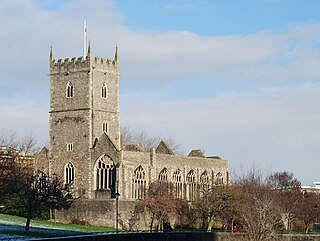 W
WSt Peter's Church is a ruined church in Castle Park, Bristol, England. It was bombed during World War II and is now preserved as a memorial.
 W
WThe Battle of Britain Bunker is an underground operations room at RAF Uxbridge, formerly used by No. 11 Group Fighter Command during the Second World War. Fighter aircraft operations were controlled from there throughout the War but most notably during the Battle of Britain and on D-Day. Today it is run by Hillingdon Council as a heritage attraction with attached museum. A new visitor centre above ground opened in March 2018.
 W
WChalfont Park, formerly known as Brudenells and Bulstrodes, is an English country house and estate near the village of Chalfont St Peter in Buckinghamshire.
 W
WChrist Church Greyfriars, also known as Christ Church Newgate Street, was a church in Newgate Street, opposite St Paul's Cathedral in the City of London. Established as a monastic church in the thirteenth century, it became a parish church after the Dissolution of the Monasteries. Following its destruction in the Great Fire of London of 1666, it was rebuilt to the designs of Sir Christopher Wren. Except for the tower, the church was largely destroyed by bombing during the Second World War. The decision was made not to rebuild the church; the ruins are now a public garden.
 W
WThe Churchill War Rooms is a museum in London and one of the five branches of the Imperial War Museum. The museum comprises the Cabinet War Rooms, a historic underground complex that housed a British government command centre throughout the Second World War, and the Churchill Museum, a biographical museum exploring the life of British statesman Winston Churchill.
 W
WThe Douglas House, London was a US servicemen's club operated by the United States Air Force for twenty-five years at two different locations in London's West End. The club's purpose was to provide "home-style service" for the thousands of American airmen based in the United Kingdom and US servicemen of all branches who might be passing through. The first location opened after the Second World War in Mayfair. In 1959 the Douglas House was relocated to Lancaster Gate, near Hyde Park. In the early 1960s, its nightclub served as a springboard for the budding career of a nascent London band called the Detours, that later went on to greater fame as The Who. When the club closed in 1970, the property was sold to a private firm.
 W
WThe Dover Strait coastal guns were long-range coastal artillery batteries that were sited on both sides of the English Channel during the Second World War. The British built several gun position along the coast of Kent, England while the Germans fortified the Pas-de-Calais in occupied France. The Strait of Dover was strategically important because it is the narrowest part of the English channel. Batteries on both sides attacked shipping as well as bombarding the coastal towns and military installations. The German fortifications would be incorporated into the Atlantic Wall which was built between 1942 and 1944.
 W
WThe Drakelow Tunnels are a former underground military complex beneath the Blakeshall Estate north of Kidderminster, Worcestershire, covering 285,000 sq ft (26,500 m2), with a total length of around 3.5 miles (5.6 km). They were originally built as a Second World War shadow factory, and were developed during the Cold War to be a fall-back government centre.
 W
WFort Henry is a Grade II listed World War Two observation bunker overlooking Studland Bay, in Dorset. It was built in 1943 to defend the bay from possible German invasion along with other beach defences such as gun emplacements, Type 25 pill boxes and concrete Dragon’s Teeth anti-tank obstacles.
 W
WThe Frythe is a country house set in its own grounds in rural Hertfordshire, just south of the village of Welwyn, about 30 miles north of London.
 W
WGrizedale is a hamlet in the Lake District of North West England, in the middle of the Grizedale Forest, located north of Satterthwaite and south of Hawkshead. It is part of the civil parish of Satterthwaite.
 W
WHM Fort Roughs was one of several World War II installations that were designed by Guy Maunsell and known collectively as His Majesty's Forts or as Maunsell Sea Forts; its purpose was to guard the port of Harwich, Essex, and more broadly, the Thames estuary. This 4,500 ton artificial naval installation is similar in some respects to "fixed" offshore oil platforms. It is situated on Rough Sands, a sandbar located approximately 11 kilometres (6 nmi) from the coast of Suffolk and 13 kilometres (7 nmi) from the coast of Essex. Today it is the location and de facto capital of the self-proclaimed and unrecognised state, the Principality of Sealand.
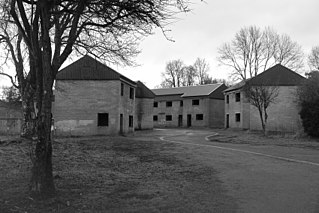 W
WImber is an uninhabited village in part of the British Army's training grounds on the Salisbury Plain, Wiltshire, England. It is situated in an isolated area of the Plain, about 2+1⁄2 miles (4 km) west of the A360 road between Tilshead and West Lavington. The entire civilian population was evicted in 1943 to provide an exercise area for American troops preparing for the invasion of Europe during the Second World War.
 W
WThe following is an incomplete list of training centres, research and development sites, administrative sites and other establishments used by the Special Operations Executive during the Second World War.
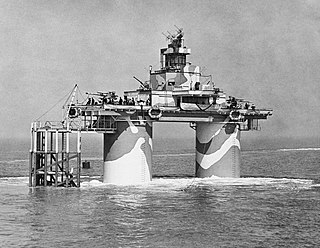 W
WThe Maunsell Forts are armed towers built in the Thames and Mersey estuaries during the Second World War to help defend the United Kingdom. They were operated as army and navy forts, and named after their designer, Guy Maunsell. The forts were decommissioned in the late 1950s and later used for other activities including pirate radio broadcasting. One of the forts is managed by the unrecognised Principality of Sealand; boats visit the remaining forts occasionally, and a consortium called Project Redsands is planning to conserve the fort situated at Red Sands.
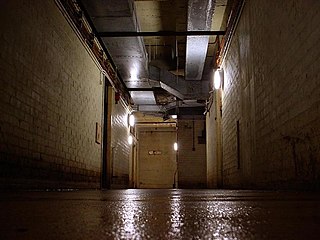 W
WPaddock is the codeword for an alternative Cabinet War Room bunker for Winston Churchill's World War II government, located at 109 Brook Road, Dollis Hill, northwest London, NW2 7DZ; under a corner of the Post Office Research Station site. The name derives from the nearby Paddock Road NW2, in turn named after a nineteenth-century stud farm, the Willesden Paddocks, situated nearby.
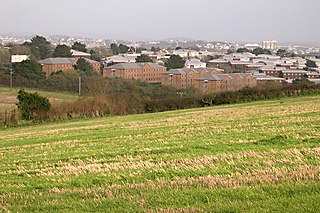 W
WHMS Raleigh is the basic training facility of the Royal Navy at Torpoint, Cornwall, United Kingdom. It is spread over several square miles, and has damage control simulators and fire-fighting training facilities, as well as a permanently moored training ship, the former HMS Brecon. Its principal function is the delivery of both New Entry Training & Basic Training.
 W
WThe Maunsell Forts are armed towers built in the Thames and Mersey estuaries during the Second World War to help defend the United Kingdom. They were operated as army and navy forts, and named after their designer, Guy Maunsell. The forts were decommissioned in the late 1950s and later used for other activities including pirate radio broadcasting. One of the forts is managed by the unrecognised Principality of Sealand; boats visit the remaining forts occasionally, and a consortium called Project Redsands is planning to conserve the fort situated at Red Sands.
 W
WSelfridges is a Grade II* listed retail premises on Oxford Street in London. It was designed by Daniel Burnham for Harry Gordon Selfridge, and opened in 1909. Still the headquarters of Selfridge & Co. department stores, with 540,000 square feet (50,000 m2) of selling space, the store is the second largest retail premises in the UK, half as big as the biggest department store in Europe, Harrods. It was named the world's best department store in 2010, and again in 2012.
 W
WThe Shoeburyness Boom refers to two successive defensive barriers across most of the Thames Estuary in the mid-20th century. As to the part perpendicular to the north shore most of the latter incarnation remains, and its nearest concrete mooring/patrol point 600 metres south. A 2 km stretch, this is designated a scheduled monument and marks the western edge of MoD Shoeburyness firing range, a restricted area. The rest was taken up in the 1960s.
 W
WSilvermere is an estate in Surrey, England named after its mere – a shallow lake of about ten acres which has a silvery appearance when seen from the surrounding slopes. It was created in the 19th century for the rich architect, William Atkinson, and subsequently became the home of the Seth Smith family, who had also become wealthy from property development. An ancient British burial mound was found on the land and the Silvermere Urn was found within. During World War II, the mere was used for experiments to develop and test the bouncing bomb. The estate is now a golf course and the final green is on an island in the mere.